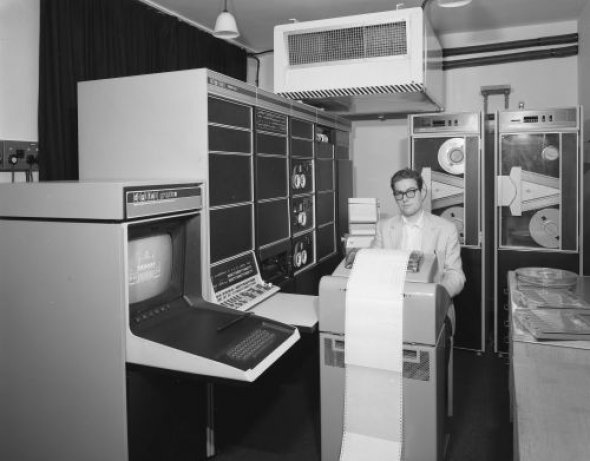Everyone Has a Business Inside Them
An exhibition at Gasworks singled out the thematic of ‘management’ as a lens through which to examine multiple artistic approaches to labour, organisation, communication and measurement. Marina Vishmidt gives the show an evaluative performance review
No, it has to be done again, it is always to be done. Never done. As if there was no longer any movement, nor any effective gestures, nor any change, but instead an absurd simulacrum of work. Work which effaces itself as soon as it is completed as if under the effect of some curse.
– Robert Linhart, L’etablii
That Elusive Object of Management
What is the object of management? And who is asking? Management is first of all exerted upon resources, be these temporal or human, rather than upon autonomous entities that can either be reasoned with or present their own reasons. Or, perhaps the autonomy of the entity is expressed through its striving to fulfil its potential as a resource, as inculcated by the homilies of human capital. As the line goes in the Stewart Marshall piece which lends the exhibition its name, ‘all I can see is the management’ (the context of the statement is that the protagonist cannot see ‘the workers’ or anything else), because management gets in our eyes. Management has set itself to measure all things, and it finds them manageable. Like its corollary ‘governance’, it is weakly totalising; it is the perpetual calibration of accommodation and control when all contestation over fundamentals has been eliminated from the scene. The double character of being both totalising and infinitely adjustable makes it the perfect emblem of the capital relation, whether carried out by bosses, trade unions or individuals upon themselves. At the same time, its role as the mediator of processes of valorisation brings it into ideological and actual proximity with religion and therapy, concerned as they all are with human perfectibility. But it must also be averred that the extension and elasticity of management occurs in a specific historical moment, one which is analytically punctual despite seeming experientially perpetual. And as we situate the extension of management in its historical moment, the same needs to be done for the various heuristics which we use to estrange it from us or ourselves from it, such as an art exhibition about management.
If the unthought of management is perhaps most iridescently the redundancy of thought, and the upcycling of politics as logistics, then the curt survey just set out above runs the risk of contenting itself with truism when more careful optics are solicited. And working with the premise that the exhibition itself is the occasion if not the source of this demand, the optic could initially be put in this way: what is the relationship between the art object (and its most tireless familiar, the artistic subject) and the object of management? Which amounts to saying, is it possible to build a show around the themes of management, work and the entrepreneur – particularly in the era anointed as ‘communicative capitalism’ – without situating art as at least a potential addressee of management’s claims, not to mention their enthusiastic referee since the era of Art & Language, the Artist Placement Group or Mierle Laderman Ukeles? The poles of the aestheticisation of a study object located in a vitrine in the middle distance and a benign topos of reflexivity are equally dangerous for an aesthetic encounter with political economy. All I Can See is the Management intends to showcase ‘artworks that consider how late capitalist approaches to working life play out at work, in education and at home’. But the exhibition does so with a sense of excluding the immanent mimesis of the managerial role performed by culture itself from its purview (advisedly ‘immanent’ since management theory has for decades embraced creativity, flux, singularity and improvisation as its passepartouts). Does the press release’s talk of a ‘pervasiveness of management’ include itself? Does the show take into account or see itself reflected in the culture of management within the sphere of culture or is this ‘culture of management’ just an eccentric ritual practised by ‘workers’, ‘entrepreneurs’ and ‘managers’ as the exotic others to artists? Management and art of course have a lot in common, perhaps most obviously that both of them make labour disappear, only later, if at all, to re-introduce it in the guise of a ‘resource’. It could be that the exhibition sees but does not speak ‘management’ and the works it has assembled seem to be ‘about’ management. ‘Management’ is then an object found and summoned into a gallery space where it is expected to behave as a native informant.
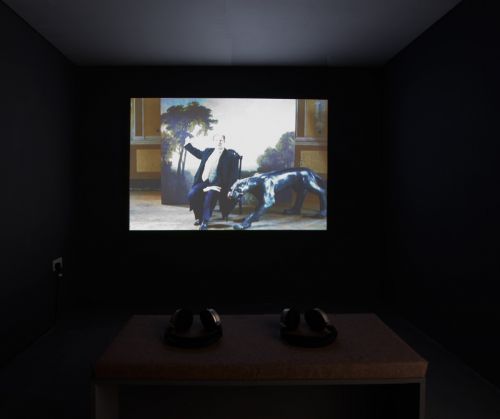
Image: Pauline Boudry & Renate Lorenz, Normal Work, 2007
But if the contention here is a certain neglect of the immanence of object to concept, then the contention must be specified a bit better. Rather than identifying a ‘blind spot’ in the show’s thinking, it should be more interesting to see how the exhibition can or should ‘perform’ the logic of management, and not just see it everywhere, that is, nowhere. It might be proposed that the characteristic problem management has with locating its object – management is notoriously autotelic, that is, formalist and concerned with the control of processes, thoroughly immersed in its own logic – is paralleled in the exhibition’s trouble deciding on a curatorial object.ii It holds up and puts down management, work, and the mediating figure of the entrepreneur, but declines to put them into relation or posit a thesis that could guide the viewer in such assembling. Perhaps here sits the common misapprehension that an argument, when made by an exhibition, is bound to be didactic or illustrative and definitely semantic. Yet fostering a productive ambiguity (rather than the doxa entailed by most iterations of artistic ambiguity) itself requires a strong curatorial conceit which an exhibition put together with this degree of diffidence willingly forsakes. What may be fostered in its stead is the perception of an arbitrariness resolving into aestheticisation on the one hand, and its corollary, nostalgia, on the other. The result may be an occlusion of insights into the contemporary dynamics of management, which would have to include the communalised management of austerity, along with the management of the business ‘in’ us, as the Department of Trade and Industry’s new slogan would have it, painting its dazzling future of mass unemployment. But if it should be said that the remit of an art exhibition that cites work, management and entrepreneurship is to be suggestive and not topical, there would still be the questions of focus and the deliberate sidestepping of the immanence of the object to the inquiry. But supposing this operation had been performed successfully, would it still fall under the rubric of reflexivity?
One dramatisation of this question was supplied by Filipa César’s video, Rapport (2007, 15 min.), in an installation which dominated the Gasworks space both visually (it was a large projection on standing screens which diagonally bisected the space) and auditorily. The video watched a group of aspiring German managers take part in an neuro-linguistic programming (NLP) session.iii This work evoked Harun Farocki’s videogrammes of ‘modern life’ in its impassive scrutiny and incidental emotiveness, although César’s editing preferences are more aleatory and nervous. Reflexivity here, as in most therapeutic regimes, was clearly acting as homeopathy and training for heteronomous goals (‘success’) which had been internalised to the point where any change to behaviour would be not just strictly personal but totally homeostatic.
Desist, Desist: Reflexivity as Total Quality Management
Reflexivity is a highly valorised term in critical art production and mediation, signalling an awareness of tradition, contradiction, situatedness and responsibility. It may be an agonised awareness or an ironic one, an emblem of complicity or militancy, and it has numberless affective and political sources. However, against a wider backdrop of massified consumption of critical cultural practice, it is also a highly normative term and technology. One need only look at the prominence of ‘criticality’ in art school curricula to recognise it as the bureaucratic form of critique, and that such a training in criticality nearly always marks the spot from whence critique has been expunged.
As such, its constative is critical, while its performative is virtuous. In this respect, it functions in analogy with instruments of feedback and measure which signal management in other spheres, like consultation, evaluation, or assessment – it is the internal standard operating procedure of the field. And it is in this way that we would have to qualify the demand for reflexivity from an art exhibition about management, before we can hope to distinguish from this demand another desire, that for immanence of object to inquiry. Which is to say, the demand for reflexivity is a product of the necessity of situating the exhibition itself in the ‘pervasiveness’ of management seen and unseen, but this demand may issue from the same field it wants to survey.
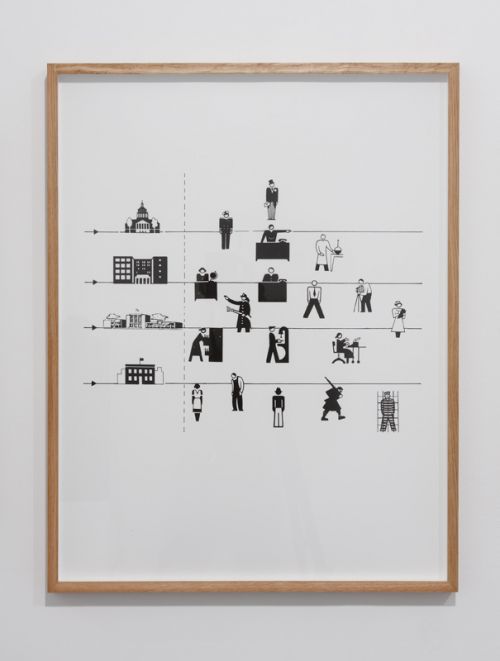
Image: Allan Sekula, School is a Factory, 1978-80
A demonstration of ‘reflexivity’ here could take the form of seeing if Gasworks’ or any comparable organisation’s (and the whole gist would be in determining what is meant by ‘comparable’) own administrative structure and relationships constitute an object for a show about management? If, as is likely, this would fall fairly within the exhibition’s conceptual limits, what would be the practical implications of situating its own operations within the field of management? Its own funding applications in a vitrine, its own overeducated invigilators and administrators enunciating their subjectivities in a video? Wouldn’t this capture the double (-bind) prize of not only being ‘about’ management but also being reflexive about the role of small publicly-funded arts organisations in reproducing the managerial paradigms they query? This critique could instantaneously be generalised to represent the formation of the neoliberal subject per se through the tangled idioms of self-expression and submission. Such a configuration is of course familiar from mid-decade and pre-crisis critical art discourse centring on the cultural producer as the model subject of precarity, and one which animated practices such as Berlin’s kpD (kleines postfordistisches Drama), prominently featured in the last exhibition project at Gasworks comparable to All I Can See: 2007’s Lapdogs of the Bourgeoisie. The latter was a much more psychoanalytic affair, tracing an ‘internal’ object, and thereby worrying the symptomatic rather than taxonomic mode: its scrutiny was into how class structured the dimmed background of artistic careers. Here, the demand for reflexivity was anticipated, and, if memory serves, diverted and defused. The press release noted that ‘[t]he participating artists have not necessarily been chosen for a specific engagement with issues of class within their work’ but hoped instead to ‘ask whether the traditional analytical tools at our disposal are helpful in such an examination of the art world today.’
Now might be the time to pause and take stock of the traction of the ‘hypothesis’: that the logic of management is already cultural; or, how it has been sung in art’s own dialect as the modernist principle of self-reflexivity. If modernism is the self-awareness of modernity (the notion of art as the research and development branch of society), what makes this reflexivity impossible now, what kind of self-awareness is required now, when the modernist temporal horizon is no longer a viable frame of reference and all we can do is manage the present? In order to show how the modernist self-reflexivity that art cannot help but perpetually engage, be it in the mode of denial or affirmation as ‘criticality’, is both like and unlike the closed loop of managerial auditing, a history of art’s own self-definition as and against the available economic subjects of social labour is required – a history which constitutes a substantial part of the self-reflexivity or ‘autonomy’ of artistic production. Art, when it reflects on ‘management’, is not just reflecting on its outside; it is defined and traversed by its antagonism with productive relations, with abstract labour.iv Artists have continually identified and misidentified their labour and their social relations with work, management and entrepreneurship. An exhibition that talks about management without alluding to the cybernetic social-engineering baroque of Stephen Willats, the Saint-Simonian consultancy schemes of the Artist Placement Group, or even – to take a current practice – the marketing training psy-ops of Pilvi Takala, might as well be talking about botany as about management, not to say handling its works as specimens. An even more prosaic way of staging the immanence of management to the field of art production would be a glance at the labour relations in its midst: the curators as managers, artists as workers and entrepreneurs. This kind of distinction itself obtains less and less. When it is the capacity to consume with distinction and sensitivity that qualifies curators and artists alike as managers of experience such profiles are tendentially subsumed into the managerial.v Viewers, then, are the unpaid work placements in this valorisation scheme. Another and related schema could inspect the determinations of speech and performance as emblematic of success in both management and art production: the iterability of practices, that they be original – ‘visionary’ – yet amenable to be reproduced and adapted in disparate contexts, which is to say, commodified, is another binding thread or shared structure.
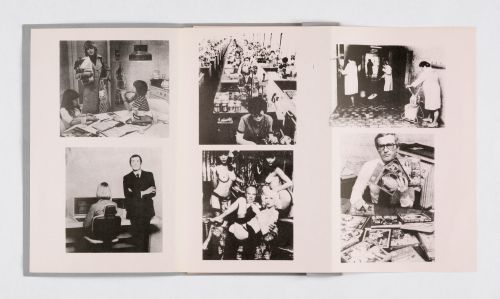
Image: Eulàlia, Discriminació de la dona / Discrimination Against Women, 1977
Management, or ‘the conduct of conduct’, is operational, and reflexive in an instrumental way, not an immanent one; it can never ‘revolutionise’ its own telos – the dominance of capitalist accounting and the unchallenged legitimacy of this ontology. The structure of reflexivity in art and the structure of assessment native to management have such different genealogies, though optimised for compatibility in today’s managerial dogma as it inflects and infects the ‘governance’ of the realm of freedom (culture) as much as it does the realm of necessity (industry). Perhaps a more generative lens to juxtapose or align them is the currently voguish curatorial rubric of ‘fiction’ – the fiction of management, and the fictions mobilised in contemporary art.vi Could we call the artist/curator a manager of ‘fictional’ resources? This could potentially open up the whole managerial ontology to an understanding of ‘purposiveness’ very different to the formalism of management without end.
Specimens
In some ways, the exhibition presents one with a less than straightforward task when it comes to discussing the works, since there isn’t a thesis to measure them against. The diffuseness of the focus – work, management and entrepreneurship – also creates some opacity. Management is rendered as training (in works by Amy Feneck, Darcy Lange, Filipa César, and, to some extent, Allan Sekula); as an anecdote of irrationality prompted by the cultishness of much ‘guru-centred’ management theory and ritual (Pil and Galia Kollektiv’s video), and that eternally elusive object of management, the Seele und Gefühl eines Arbeiters (Soul and Feelings of a Worker). This set of works by KP Brehmer was made in 1978-1980, and they disclose how the mimesis of measure produces a spooky and sublime abstraction.vii Sublimed into human capital, the fictitious analogy between employee creativity and the boundlessness of self-valorising value is here turned into a minimal chromatic allegory, implying an absent manager to survey these charts and scry the runes of exploitation. Brought up to date, the key here may be that the secret of the value of both fictitious capital and labour-power is not just unpaid labour (surplus-value) but the speculation on labour that has not been done, and will not be; not just because of propensities for ‘human strike’ but due to the systemically senseless nature of such labour.
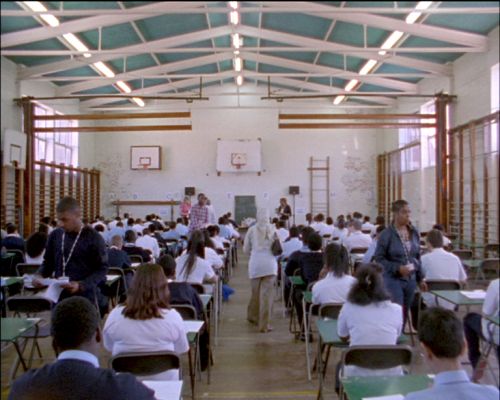
Image: Amy Feneck, Government Workers, 16mm transferred to DVD, 2010
Darcy Lange and Amy Feneck are interesting choices insofar as their work accentuates state (and in Lange’s case, also private) education as a dimension of ‘governance’ in the present and recent past, while also indexing the show’s signifiers to yet another domain of modular control i.e. ‘management’ in its broadest sense. However, Feneck only has her title, Government Workers (2010, 6 min.) to bear this out in what is otherwise a very rote documentation of institutional space (a Hackney primary school) that does not speak for itself. The old critique of artistic objectivity or its innocuous character mask, ‘observation’, such as that made by Brecht in The Threepenny Trial about the image of the thing as incapable of speaking for itself, targeting the rough pieties of neue sachlichkeit, arises here.viii Lange’s films, in the meantime, are presented very much as an object: their length and durational quality lend them vitality as documents, but are needlessly reified as the incidental qualities of an art object, and prove forbidding to the viewer’s engagement, rather than leaving them open to the comparison and analysis which Lange’s archive sought to enable. Going into so many classrooms and interviewing pupils and instructors at such length, itself a component of a longer term audiovisual research into workplace relations, enacts an intriguing mimesis of industrial sociology; at least its porosity to such uses raises a question for art’s relationship to management which is not taken up. Pil and Galia Kollektiv’s piece Co-Operative Explanatory Capabilities in Organisational Design and Personnel Management (2010, 23 min.) can be seen as metonymic for the world view of the entire show – its fascinated, fabulating approach to found material echoes the show’s approach to its ‘object’ at its best, but also exemplifies the noticeable though not overpowering ‘wrong-end-of-a-telescope’ impulse of nostalgia. Allan Sekula’s School is a Factory (1978-80) is, on the other hand, perhaps the best synthesis of the show’s stated concerns, with its critical realist diagramming of class, education, shifts in accumulation, and the de-skilling which management nearly always favours in its drive to submit the hard-won autonomy of labour to the automatism of the organisation. Stewart Marshall’s video Distinct (1979, 38 min.) is a finely honed absurdist parlour drama depicting standardisation as the ineluctable drift of all human projects, from a couple’s relationship to the productive relations on made-for-television film sets.
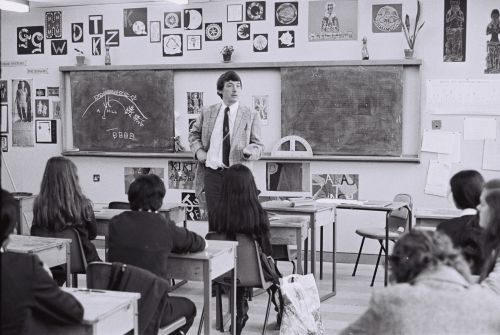
Image: Darcy Lange, Study of Three Birmingham Schools (Mr Perks Animal Farm English Class, Ladywood Comprehensive School), 1976,
The diversity of All I Can See is the Management’s excellent talks programme understandably could not be emulated within the exhibition.ix As the exhibition is not a discursive medium, such a multi-layered constellation of topics and tropes was bound to suffer in the absence of a strong curatorial argument, and this was embodied by oblique or tenuous curatorial choices. One such was the Normal Work (2007) video and photograph suite by Pauline Boudry and Renate Lorenz. It might well be about work, but it is ‘about’ a number of other things as well, and none of them seem discernibly germane to ‘management’. Arbitrary-seeming also was the inclusion of a buoyantly punk collage series by Eulàlia entitled Discriminació de la dona (Discrimination Against Women, 1977). To give an art exhibition the task of unfolding the subsumption, or redefinition, of work by management, while concomitantly charting the emergence of the entrepreneurial subjectivities dictated by this shift, is perhaps unrealistic, and the show’s eschewing of didacticism underscores its appreciation that this is the case. Yet the concatenation of, at times painfully, unrelated work reflecting on different aspects of this unwieldy proposition could perhaps been avoided, or alleviated, had the telescope been turned in on itself and created an object in its own image.
Marina Vishmidt <maviss@gmail.com> is a London based writer and PhD candidate at the School of Business and Management at Queen Mary, University of London
Info
All I Can See is the Management took place at Gasworks Gallery, London, 7 October 2011 - 11 December 2011
Footnotes
i Robert Linhart, L’etabli, (Paris: Les éditions des minuit, 1981, pp 13-14); quoted in Diane Morgan, ‘Are you working enthusiastically? Fourier, Proudhon and The Serial Organisation of the Workplace’, Parallax, 2011, vol. 17, no. 2, pp.36-48; 42.
ii The focus on ‘outcomes’ in the ‘managerial regime’ can be deceptive – ‘outcomes’ are the final stage in a sequence of processes, and thus cannot be analysed as normative or practical goals. ‘Outcomes’ can only be sought in the conditionality of management, that is, the environment which makes its processes tenable and operable.
iii The talks programme also offered an NLP session, with an explanation of its principles by a practitioner.
iv ‘Yet it is precisely as artifacts, as products of social labor, that [artworks] also communicate with the empirical experience that they reject and from which they draw their content.’ Theodor W. Adorno, Aesthetic Theory, London: Continuum, 2004. p.5.
v I owe the terms of the decidedly incipient analysis here to discussions with Stefano Harney, who proposes that the management of attention is an imperative shared by cultural workers (artists and art professionals) and ‘regular’ workers, a signal mode of the local subsumption of labour to the ‘managerial’. In this framework, art becomes internal to labour as the suspension or diversion of attention.
vi As the significantly abridged article ‘The Conduct of Management and the Management of Conduct: Contemporary Managerial Discourse and the Constitution of the “Competent” Manager’ by Paul du Gay, Graeme Salaman and Bronwen Rees, included in Gasworks’ ‘Pipeline’ reading resource for the exhibition, has it, ‘It is perfectly possible and legitimate to conceive of the "manager" as a fiction, for example, because that category of person has not always existed.’ http://pipeline.gasworks.org.uk/2011/08/04/constit...
vii See note 5. With regard to Brehmer, he is noted as an exponent of the early 1970s West German art movement kapitalistschen realismus, somewhat prior to Mark Fisher’s coinage. Like his contemporary Marianne Wex, Brehmer was concerned with the behavioural effects of visual communication, abstracting and staging these motifs, so that their disciplinary character might be better revealed.
viii ‘For the situation is complicated by the fact that less than at any time does a simple reproduction of reality tell us anything about reality. A photograph of the Krupps works or GEC yields almost nothing about these institutions. Reality proper has slipped into the functional. The reification of human relationships, signalled by the factory, can no longer be revealed by the photograph. Therefore something has actually to be constructed, something artificial, something set up. For this reason, art is indeed necessary. But the old concept of art, the one that rests on experience, is superseded. For whoever represents that which is experienceable in reality, also does not capture it. Reality is no longer experienceable in its totality.’ Bertolt Brecht, Schriften: Grosse Kommentierte Berliner und Frankfurter Ausgabe, Werner Hecht et al (eds.), 1, vol. 21, Berlin 1988, p.469; quoted in Esther Leslie, ‘Happy Knowledge’, (unpublished).
ixThe programme was not only illustrious but unusually considered, with the participation of critical organisation theorist Peter Fleming, Marxist anti-work and feminist political theorist Kathi Weeks, artist and trade union activist Fred Lonidier, and a screening of Joaquim Jordà’s Numax Presenta… (1980, 105 min.), a documentary about an occupation of a textile factory in Franco-era Barcelona.
Mute Books Orders
For Mute Books distribution contact Anagram Books
contact@anagrambooks.com
For online purchases visit anagrambooks.com


